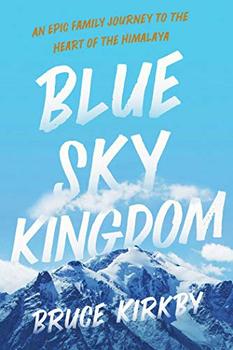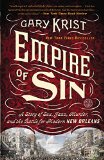Summary | Excerpt | Reviews | Beyond the book | Read-Alikes | Genres & Themes | Author Bio

In Search of the Sacred in Modern India
by William DalrympleA mesmerizing book that illuminates the remarkable ways in which traditional forms of religious life in India have been transformed in the vortex of the region’s rapid change.
William Dalrymple is the author of six previous acclaimed works of history and travel, including City of Djinns, which won the Young British Writer of the Year Prize and the Thomas Cook Travel Book Award; the best-selling From the Holy Mountain; White Mughals, which won Britain’s most prestigious history prize, the Wolfson; and The Last Mughal, which won the Duff Cooper Prize for History and Biography. He divides his time between New Delhi and London, and is a contributor to The New York Review of Books, The New Yorker, and The Guardian.
From the author of The Last Mughal ("A compulsively readable masterpiece" —The New York Review of Books), an exquisite, mesmerizing book that illuminates the remarkable ways in which traditional forms of religious life in India have been transformed in the vortex of the region’s rapid change—a book that distills the author’s twenty-five years of travel in India, taking us deep into ways of life that we might otherwise never have known exist.
A Buddhist monk takes up arms to resist the Chinese invasion of Tibet—and spends the rest of his life atoning for the violence by hand printing the finest prayer flags in India ... A Jain nun tests her powers of detachment as she watches her closest friend ritually starve herself to death ... A woman leaves her middle-class life in Calcutta and finds unexpected fulfillment living as a Tantric in an isolated, skull-filled cremation ground ... A prison warder from Kerala is worshipped as an incarnate deity for three months of every year ... An idol carver, the twenty-third in a long line of sculptors, must reconcile himself to his son’s desire to study computer engineering ... An illiterate goatherd from Rajasthan keeps alive in his memory an ancient four-thousand-stanza sacred epic ... A temple prostitute, who initially resisted her own initiation into sex work, pushes both her daughters into a trade she nonetheless regards as a sacred calling.
William Dalrymple chronicles these lives with expansive insight and a spellbinding evocation of circumstance. And while the stories reveal the vigorous resilience of individuals in the face of the relentless onslaught of modernity, they reveal as well the continuity of ancient traditions that endure to this day. A dazzling travelogue of both place and spirit.
Nine Lives is a stunning, affecting study of human aspiration and goodness. But despite the jacket blurbs, this isn't really "travel writing." As Dalrymple moves through India's "sacred topography," he assembles the biographies of nine people whose lives intersect with the divine. Although contemporary India is always present (a shaman listens to a soccer game on a transistor radio from his hut on a bone-strewn cremation plot), Nine Lives immerses the reader in an India of "sacred time" where the contemporary meets the times, gods are present in nature - and art, song, wandering, military service - even prostitution - express spiritual striving, devotion, humility, love and hope...continued
Full Review
 (722 words)
(722 words)
(Reviewed by Jo Perry).
The subjects of Dalrymple's Nine Lives seek transcendence and divine communion in different ways. Some embrace aceticsm, while for others like the wandering Baul minstrel, the reciter of holy epics, or the maker of bronze deities, "art and religion are one."
The most vivid practitioner of art as devotion is Hari Das, the dalit (untouchable) theyyam dancer. In an article for the London Times, Dalrymple explains, "Theyyam dance is a spectacular form of possession dance from northern Kerala, in the southwest of India, remarkable for its vibrant music and its astonishingly powerful and elaborate makeup and masks. The word theyyam derives from daivam, the Sanskrit for god. During the season, the theyyam dancers bring stories ...

If you liked Nine Lives, try these:

by Bruce Kirkby
Published 2022
A warm and unforgettable portrait of a family letting go of the known world to encounter an unfamiliar one filled with rich possibilities and new understandings.

by Gary Krist
Published 2015
From bestselling author Gary Krist, a vibrant and immersive account of New Orleans' other civil war, at a time when commercialized vice, jazz culture, and endemic crime defined the battlegrounds of the Crescent City
Music is the pleasure the human mind experiences from counting without being aware that it is counting
Click Here to find out who said this, as well as discovering other famous literary quotes!